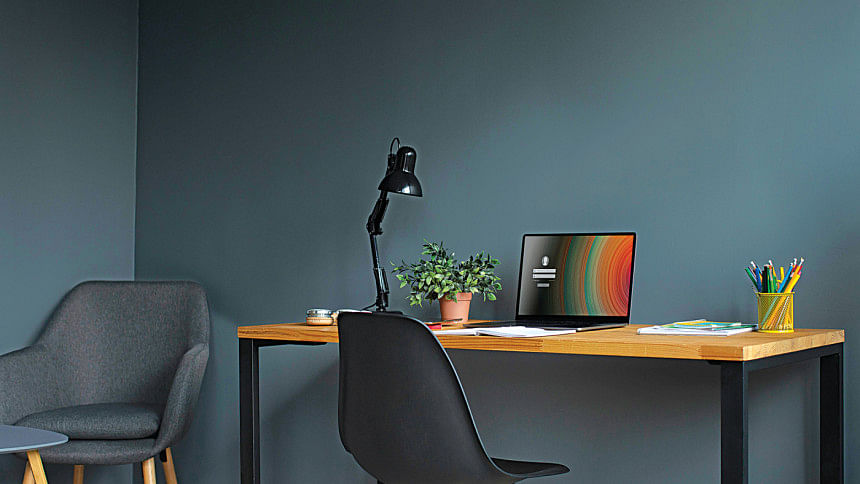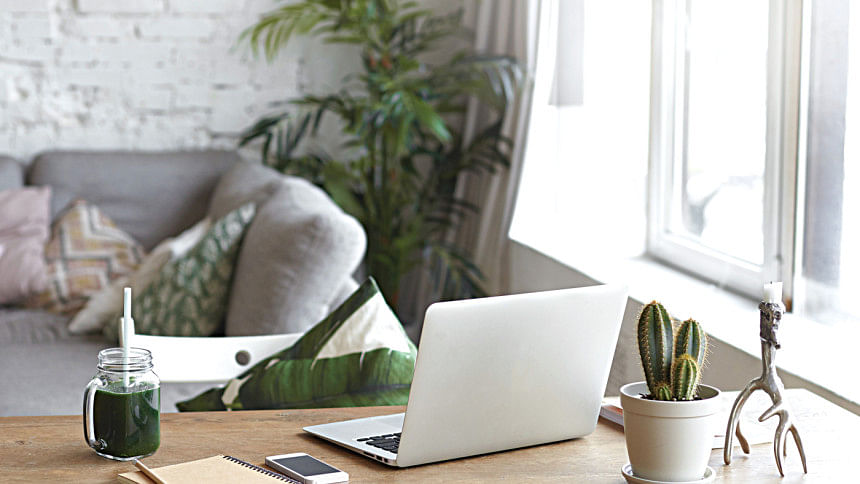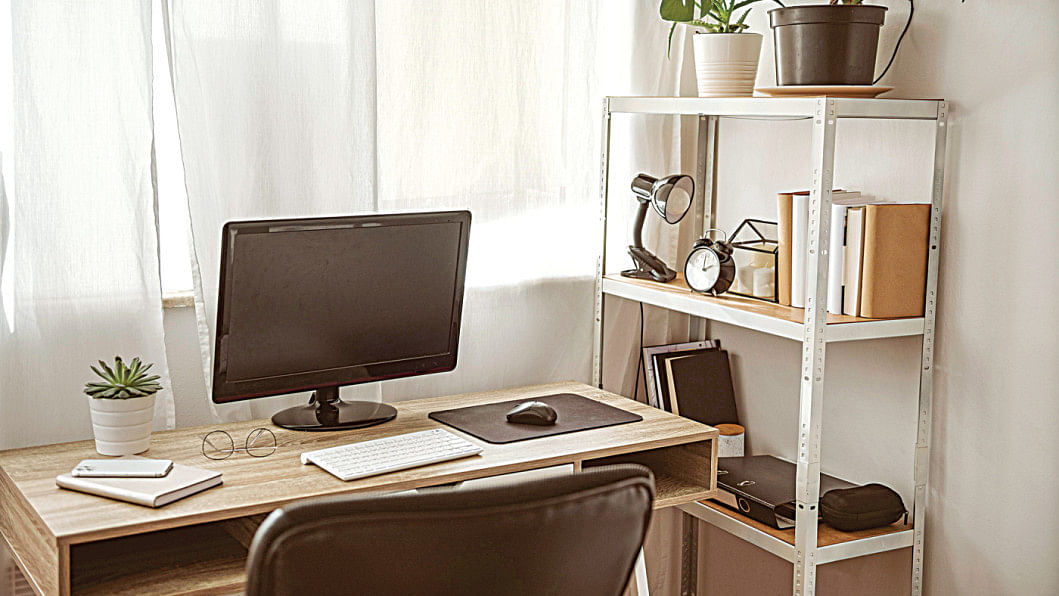Creating the perfect home office productivity, comfort, and style

A home office is a designated workspace in your home where you focus on professional tasks, such as working on a computer, laptop, or other office equipment. For many people, working from home has become a regular part of their routine. To make working from home more productive and enjoyable, creating a perfect home office that strikes the right balance between productivity, comfort, and style is essential.
Natural light and screen glare
Natural light is crucial in any workspace. It has been shown to boost mood, improve focus, and increase overall productivity. However, when not managed properly, natural light can create a glare on computer screens, making it difficult to read or view images. This is especially true when working on a PC or laptop near windows. The glare reflects directly onto the screen, disturbing your focus and diminishing the quality of your work.
Fardina Faridi, Architect at Best Holdings Ltd. suggests, "Position your desk strategically to allow natural light to enter without direct glare. Use blinds or light curtains to filter sunlight. Choose light-coloured walls and floors to reflect light and create a brighter environment. Use table lamps or ambient lighting to illuminate your workspace during the day without causing glare. This ensures a well-lit workspace without compromising comfort or visibility."
Acoustic and soundproofing
A home office should be a quiet, distraction-free environment, particularly when participating in phone calls or virtual meetings. Acoustic treatment and soundproofing are essential for reducing noise and ensuring clarity during calls. While soundproofing prevents sound from entering or leaving the room, acoustic treatment helps manage how sound behaves inside the space. It eliminates echoes and dampens noise levels, creating a more professional atmosphere.
According to Faridi, "Soundproofing your home office involves sealing windows, using thick curtains or soundproofing curtains, installing acoustic panels, and incorporating furniture to absorb sound. These measures help reduce external noise, create a quieter work environment, and promote concentration. The combination of these elements ensures a quiet and efficient workspace."

Storage without cluttering your space
Clutter is a common issue in home offices and can lead to distractions and stress. A tidy and organised workspace is essential for maintaining focus and productivity. Proper storage solutions can help keep your workspace clutter-free while ensuring easy access to necessary items.
Quazi Fahima Naz, an architect at lead Green Associate, suggests, "To maximise space without clutter, consider using multi-functional furniture like ottomans with hidden storage or desks with built-in drawers. Vertical storage solutions like shelves, hooks, or pegboards can be used to store office supplies on the wall. Under-bed storage can be used for seasonal clothes, shoes, or office supplies. Built-in cabinets provide ample storage without taking up extra floor space. Nesting tables offer extra surface area and can be pulled out when needed. Door organisers can be installed on the backs of doors for smaller items. Decorative baskets or bins can be placed on shelves or inside cabinets for easy access. Floating shelves create a clean and open look while providing storage for books, decor, and office supplies without taking up floor space. Wall-mounted racks or pegboards are perfect for organising tools and accessories. Regular decluttering is essential to ensure your workspace remains organised. Donate or discard items you no longer use to free up space for more important items."
By implementing these storage strategies, you can enhance your home office functionality and keep it tidy, creating a more organised and less stressful work environment.

Stylish, comfortable, and productive environment
Decorating your home office should be more than just an aesthetic endeavour. It's about creating a space that balances comfort with functionality, a space that encourages productivity and creativity. Naz suggests that to create a functional home office, choose a specific area and invest in ergonomic furniture. Place your desk near natural light to boost energy levels and focus. Incorporate stylish storage solutions and personal touches like soft pillows and plush rugs. Decorate with inspiring artwork to boost creativity and productivity. Choose a colour scheme that promotes focus and creativity. Minimise clutter by using organisers and keeping your workspace clean. Create break zones for relaxation with cozy chairs or tables. By incorporating these elements, you can create a home office that motivates you and reflects your style.
Improving air quality
Good air quality is an essential part of any comfortable workspace. Proper ventilation is necessary to keep the air fresh and to ensure that the environment remains comfortable throughout the day. Natural ventilation can be achieved by positioning windows or vents on opposite sides of the room to allow cross-ventilation. This strategy promotes airflow, allowing fresh air to replace stale air.
Ar. Muhaimin Shahriar, an architectural consultant, highlights, "In Bangladesh, this is especially effective when combined with traditional architectural elements such as courtyards, which promote airflow. Skylights and roof vents also help hot air escape, improving overall air quality."
Air conditioning is another option for maintaining a comfortable temperature in your home office. According to Faridi, " Fans can provide airflow, but they often produce noise, which can be distracting. For a quieter option, an air conditioner offers a cooler environment and a more peaceful workspace. Table fans can be used as well according to demand."
Creating the perfect home office is about striking a balance between functionality, comfort, and style. By considering factors like natural light, acoustics, storage solutions, and air quality, you can design a workspace that enhances productivity, reduces distractions, and reflects your style. Whether you're working from home full-time or just need a space to focus, a well-designed home office can make all the difference.

 For all latest news, follow The Daily Star's Google News channel.
For all latest news, follow The Daily Star's Google News channel. 



Comments